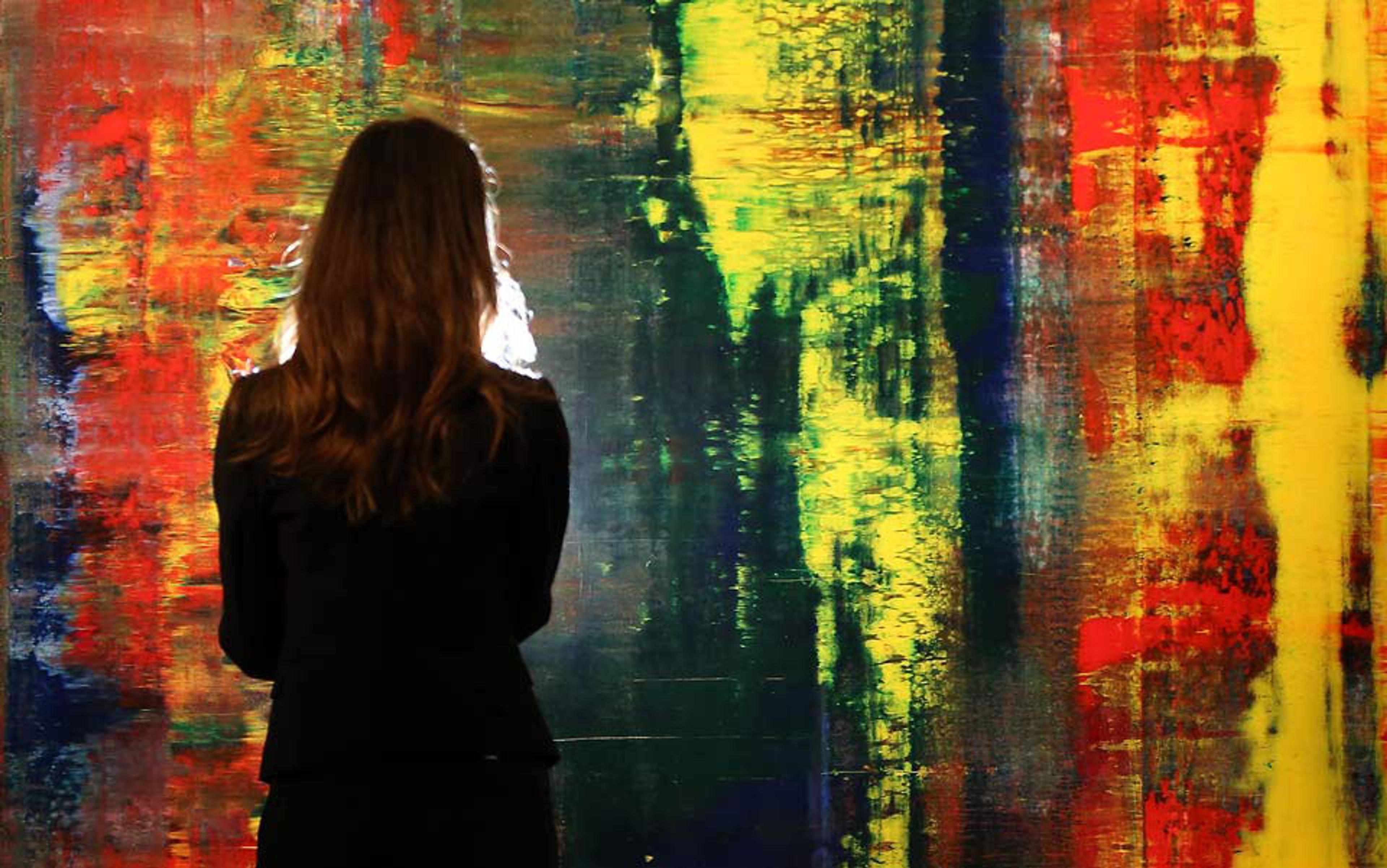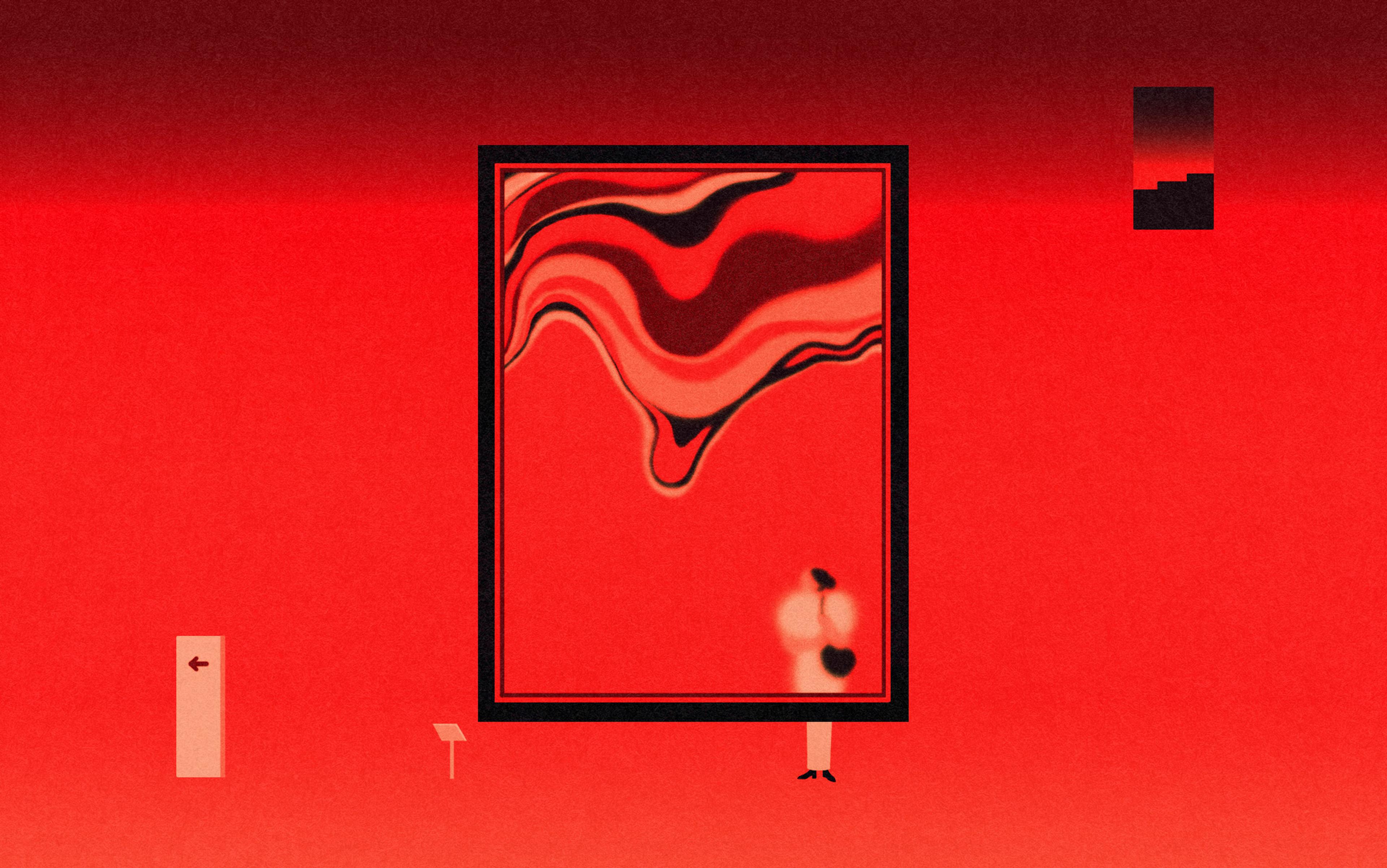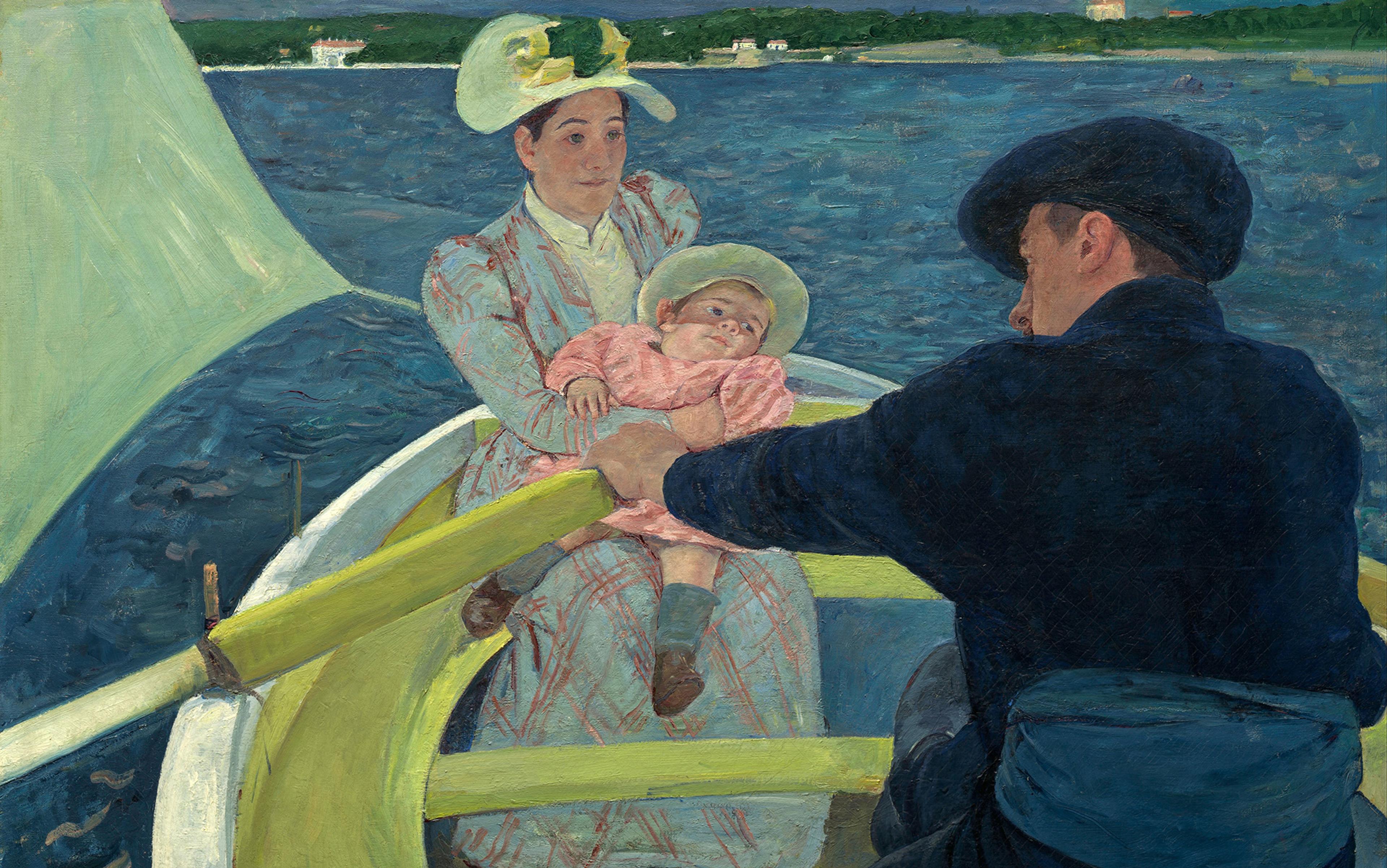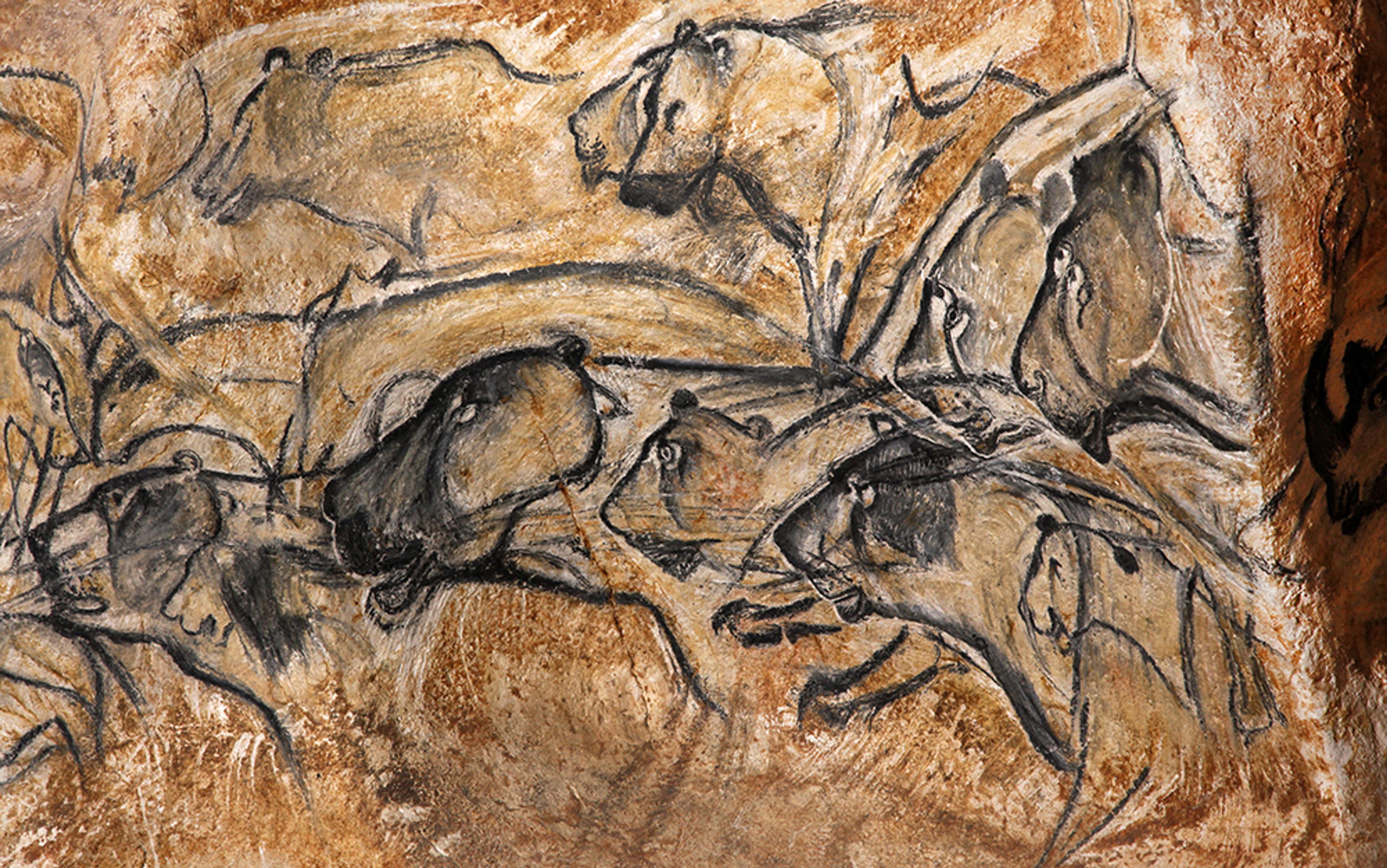I was in my teens when I first started to really look at paintings. Although I didn’t just look, I bathed in them, and I was perpetually teased by my friends for the tremendous length of time it took me to navigate an art gallery. This pleasure of looking and of being completely absorbed in painting has remained constant; whether ancient or modern, figurative or abstract, and whatever the style, I am prepared to give every work the chance to lure me in.
What is so compelling? When art was an adjunct of religion, its power was clear. But from the Renaissance on, painting, at least in the Western tradition, has preoccupied itself as intensely with secular as with overtly religious subject matter, or else with no subject at all. Yet when you are in the presence of an unequivocally great work of art, it seems to open a door to a realm of ideas and emotions not accessible through any other route. It’s a quality that goes far beyond prettiness or great skill, which on their own can numb and irritate, and it transcends the visceral excitement of paint, or the sorcery of summoning life onto canvas. Nor is it just the stories of power or desire, however literal or oblique, that binds us. There is some hankering after truth that drives us to look intently at pictures, some hunger of the spirit as much as the senses.
One way or another, I think, artists themselves have always known this. About 3-4,000 year ago, artists in Ancient Egypt began to use borders to mark off narrative scenes and decorative panels on tomb walls. The great vase-painters of Ancient Greece and the mosaicists of Ancient Rome also understood the power of the edge in transforming our relationship with an image. Rather than being continuous with our mundane world, as is sculpture for example, a framed painting, or bordered image, offers a world apart, transfigured from four down to two dimensions; a window onto an ideal space.
For those of us who love painting, this is the key to the medium’s hold over us. Be it traditional, figurative painting, or abstract; Byzantine, or cubist, and whether from the 12th century or the 21st, the core pleasure of any painting is that of moving into another world, where time is stilled and passage for the eye is swift and free. This is as true of the blue depths of a landscape by 16th century Flemish artist Joachim Patinir as it is the complexity of character, wrought in swirling oils, in a portrait by Frank Auerbach. Of course, a great deal of the experience of a painting is aesthetic and even intellectual – you enjoy the structure of forms, textures and colours and you respond to the story, or ideas, or emotions the artist is eager to communicate. You go to painting eager for a new vision of this world. But you also go very often with a hope, too, for a glimpse into another. Perhaps it is this illusion of a threshold that enables painting to so readily serve as a gateway to another psychological or even spiritual domain.
One painter who understood this potential very well was Balthus. In many ways a fantasist, with an unsettling fixation on young girls, he was compelling in his commitment to the power of painting to put us in touch with a spiritual dimension. I have always been drawn to his landscapes, with their serene nostalgia for another world, and to his quiet interiors, in which a figure often stands against or looking through a window. These paintings conjure explicitly the pleasure we gain from looking through a frame at a painted landscape, as much as the pleasure of looking at the landscape itself.
It is the psychological power of the framed space that has long made painting, in particular, a natural ally of religion
According to Semir Zeki, professor of neuroesthetics at University College London, our pleasure is a neurological aptitude built into the visual system of the brain, whereby we are drawn to window-like, frame-like structures. For Zeki, Balthus is the quintessential painter in his ability to generate maximum excitement in our brain. But whatever the neurological source of the pleasure, there is no doubting the lively sense of communication, even of communion, that lovers of painting experience when they spend time in front of a great work. You have only to think of the hushed awe in the Sistine Chapel, despite the cricked necks, or the reverential queues of people wishing to pay homage to the Mona Lisa in the Louvre. Even the crude vandalism of Vladimir Umanets, who scrawled black paint on Mark Rothko’s painting Black on Maroon (1958) at the Tate Modern in October, is a perverse recognition of the painting’s power.
The Guardian’s Jonathan Jones commented at the time: ‘It is a horrible fact that people who for whatever reason feel compelled, in an art gallery, not to stand and look but to scribble, or throw acid, or pull out a hammer, tend to pick the most potent and authoritative works of art for their assaults. It seems there is a psychic force in truly great art that draws the attacker.’ Jones gave the example of Leonardo da Vinci’s Burlington Cartoon in the National Gallery – that soft sensuous deeply moving evocation of motherly love which portrays Mary and her mother Anne, with the infant Christ and the child St John the Baptist – which was shot in 1987 by a man with a gun. Likewise, in 1985, Rembrandt’s radiant and alluring Danaë in the Hermitage so provoked a visiting Lithuanian, later declared insane, that he threw sulphuric acid over the canvas before slashing it.
Setting aside the provocation of their subject matter, these works are obvious emblems of established value. The institutional apparatus of the museum – the velvet ropes, bullet-proof screens, priestly attendants and hushed whispers – all conspire to guide the alienated and angry to the most revered works. In just the same way, such scene-setting encourages the homage of those more inclined to worship at the altar of art. These trappings of cultural value contribute to what the German philosopher Walter Benjamin, in his essay ‘The Work of Art in the Age of Mechanical Reproduction’ (1936), defined as the specific ‘aura’ of the unique work of art: they shore up our dwindling faith in the unique.
But I would argue that it is also the psychological power of the framed space that has long made painting, in particular, a natural ally of religion. Tradition holds that Saint Luke the Evangelist, as well as being a physician was also a painter. Legend has it that he painted the Virgin Mary from life, which perhaps, is the source of his status as the patron saint of artists, capturing with his likeness the power of the Virgin to heal and forgive. From the earliest Christian paintings in the catacombs of Rome, painting has proven to be a forceful tool of evangelisation, depicting on the walls truths too dangerous to speak, while reminding those persecuted for their beliefs of the glorious otherworld of grace to which they aspired. From the conversion of Emperor Constantine, religious art came above ground, with the icons of the Byzantine Orthodox Church standing as a passionately defended aid to devotion.
If part of the allure of great painting is its capacity to draw you into another world, to make an elsewhere tangible, the icon painters hoped in turn to be channelling a sacred power – one that would flow out from the image into the beholder. It was the fear that the populace might take this transfer of sacred power too literally, might ascribe to the image the holiness reserved for the spiritual subject of the image and so fall into the sin of idolatry, that led to the fierce debacle of iconoclasm in the Orthodox Church of the eighth and ninth centuries. At two pivotal Church Councils, in 754 in Hiereia and 787 in Nicea, the use of sacred images was first condemned and then defended, but not before the destruction of many images.
It was not until 843, after yet another wave of vehement iconoclasm, that Theodora, widow of Emperor Theophilus (829-842) and regent for Emperor Michael III, was able finally to restore the use of images in the Orthodox Church. She is supposed to have said: ‘If for love’s sake, anyone does not kiss and venerate these images in a relative manner, not worshipping them as gods but as images of their archetypes, let him be anathema!’ Theodora raises an argument as old at Plato: are images to be condemned because they are merely delusional copies of the shadows of reality that surround us; or are they rather to be celebrated as bringing intimations of the ideal world beyond?
Theodora drew heavily on the writings of the theologian St John of Damascus, who suggested that the Old Testament ban on graven images applied only to God, who is ineffable and invisible. St John argued that the act of incarnation was in itself an argument for the holiness of representation, since Christ was in a sense a representation of God in human form. To condemn religious imagery was therefore to refuse the miracle of Christ’s birth and the salvation he promised for the whole created world. From the point of view of art history, this was the decisive point where Christianity departed most completely from the monotheist traditions of Judaism and Islam, with their ban on religious imagery.
By the 12th and 13th centuries, sacred images had, in Western Christendom, become a powerful means of ensuring the flow of a potentially radical and passionate piety into orthodox channels. The earliest painted borders, those first demarcations between the sacred and the profane, had become entire altar pieces – the elaborate architecture of public piety, where the sacred image was protected, honoured: separated out from our fallen world with gilded carving, but also made available to us for our contemplation. Our communion with the infinite was focused tightly through the lens of Christian mythology.
Then, on the threshold of the Renaissance, in the frescoes of Giotto and his followers in the 14th century, the membrane between the world of the Bible and sacred fable, and the day-to-day world grows thin. Giotto’s use of three dimensional modelling and naturalistic detail invited us to find eternity on our doorsteps, just as the earliest humanist philosophers encouraged us to trust our own enquiring intellects and all five senses in exploring a created world that was no longer opposed to heaven, but shot through with divinity. In the magnificent decorations in the Scrovegni Chapel in Padua, accomplished around 1305, which consist of 37 frescoes of the life of the Virgin Mary and the life of Christ, Giotto explores the manifold hopes, fears and dreams of humanity. Though expressly Biblical, these theatrical scenes are played out on a stage that seems tantalisingly adjacent to our own.
From then, the conversation between painting and religion has never entirely gone away, although the portal to the sublime has become wider, encompassing landscape, portraiture, and, latterly, in the 20th century, abstraction. But whether these doorways lead anywhere except to a wall of paint, has become a central question for both artists and audience.
In the second half of the twentieth century, Mark Rothko’s dark, intensely layered abstract paintings – which promise depth and invite introspective reflection – became emblems of a contemporary art of transcendence that avoided the discredited symbolisms of both Christianity and Romanticism. In conversation with artist and critic Selden Rodman, Rothko defended himself against the claim that his abstract colour works were merely decorative and formalist. He said; ‘I’m interested only in expressing basic human emotions: tragedy, ecstasy, doom, and so on, and the fact that a lot of people break down and cry when confronted with my pictures shows that I communicate those basic human emotions.... The people who weep before my pictures are having the same religious experience I had when I painted them. And if you, as you say, are moved only by their color relationships, then you miss the point!’
The son of Russian Jewish immigrants to the United States, Rothko’s reading of Friedrich Nietzsche, Freud and Jung inspired him to search, in paint, for an alternative language of spiritual expression to that offered by traditional religious imagery. He acknowledged the difficulty of doing this when, in 1947, he wrote: ‘Without monsters and gods, art cannot enact our drama: art’s most profound moments express this frustration. When they were abandoned as untenable superstitions, art sank into melancholy.’ Rothko saw his increasingly abstract art as an attempt to overcome this melancholy: ‘I do not believe that there was ever a question of being abstract or representational. It is really a matter of ending this silence and solitude, of breathing and stretching one’s arms again.’
Is it enough that what we find when we plunge in might be no more than an aura, or a trace, or a scent of the sublime?
In 1959, en route to Europe, after having embarked on that great sequence of murals for the private room in the new Four Seasons restaurant at the Seagram Building in New York – nine of which are now housed together at Tate Modern, and one of which was vandalized this year– Rothko explained in an interview that he had been deeply influenced by Michelangelo’s walls in the staircase of the Medicean Library in Florence. ‘He achieved just the kind of feeling I’m after,’ Rothko said, ‘he makes the viewers feel that they are trapped in a room where all the doors and windows are bricked up, so that all they can do is butt their heads for ever against the wall.’
In this light the Seagram Murals might be understood as a punitive refusal of transcendence for the restaurant’s privileged clientele, or else an admission of his own despair.
In the final six years of his life, before his suicide in 1970, Rothko dedicated himself to the creation of what is now known as the Rothko Chapel, in Houston, Texas, commissioned by the Texas oil millionaires John and Dominique de Menil. Initially conceived as a Roman Catholic chapel, Rothko intended this to be a place of pilgrimage for those seeking, as he did, a contemporary religious art. Now non-denominational, the small, windowless building houses 14 large canvases, arranged in a series of triptychs, together with five individual canvases, all built up with impenetrable layers of chestnut brown, brick red, mauve and black. At the chapel’s dedication in 1971, Dominique de Menil, spoke unequivocally about her understanding of the significance of Rothko’s work: ‘We are cluttered with images and only abstract art can bring us to the threshold of the divine.’ Whether it is indeed to the threshold of the divine, with room to breathe and stretch one’s arms again, or to the blank end of some dark tunnel, where we can only butt our heads, is for the viewer to determine.
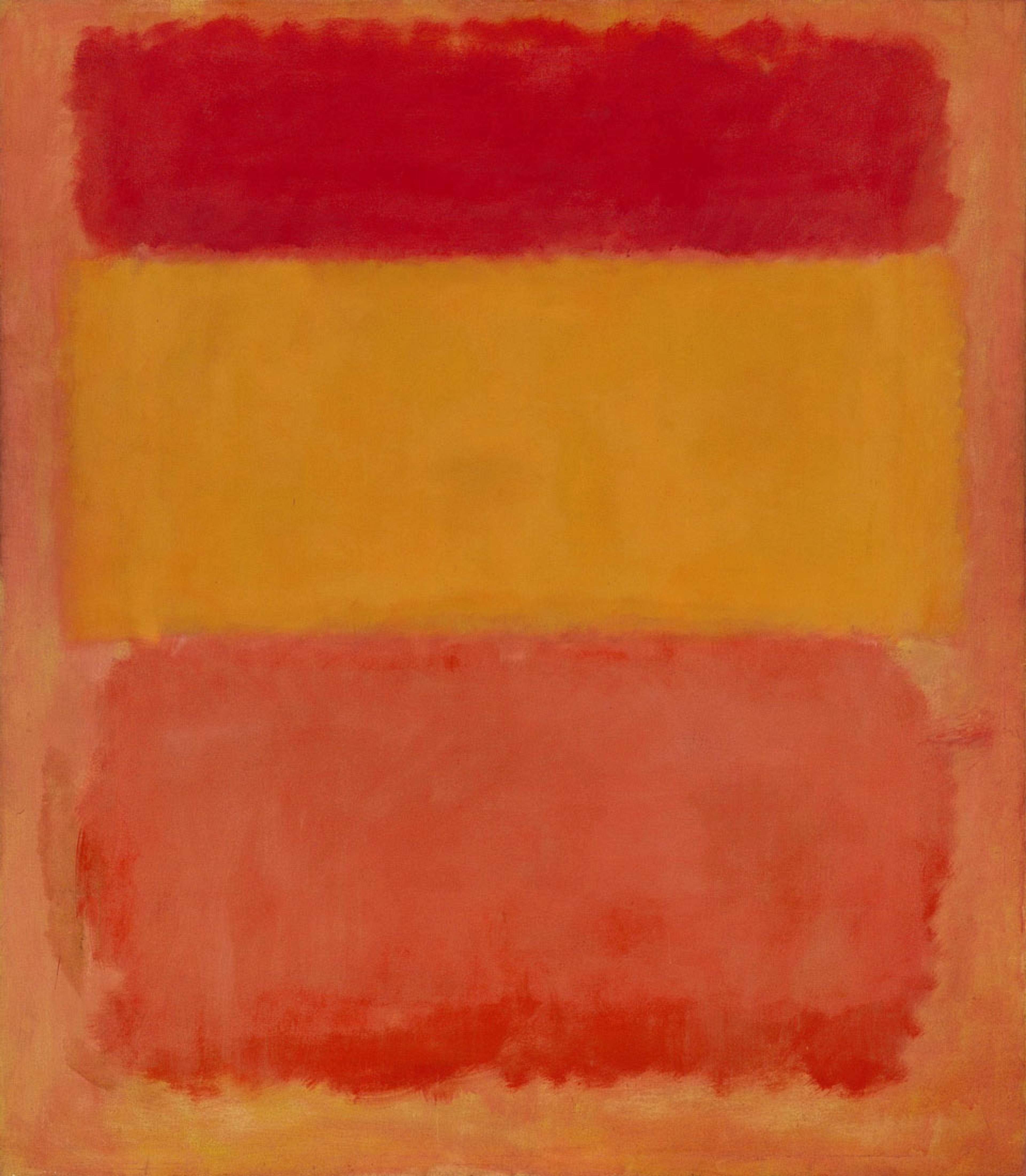
A portal onto the divine? Mark Rothko; Orange, Red, Yellow 1961. Photo by PA/Christies Auction House
What is certainly true is that there are many very wealthy individuals who are prepared to pay for the experience of owning, and, presumably, contemplating a Rothko canvas. In May his glowing Orange, Red, Yellow (1961) shattered all auction records for post-war and contemporary art, when it sold for nearly $87 million (£54 million) at Christie’s in New York.
It is within the context of the near-veneration of Rothko’s work, both by the market and by the priesthood of art critics and museum curators, that we arrive at a contemporary cliché. Art, we are told, has become the new religion. In the godless West, where the churches are empty and theology is dismissed as a fairy tale, we seek spiritual nourishment in our temples of culture, and find in art the sublime we once sought through it. So when a small group of pilgrims reaches that great masterpiece of Marian devotion, Piero della Francesca’s Madonna del Parto, in its quaint wayside chapel, the tiny Museo della Madonna del Parto of Monterchi in Tuscany, it is the painter’s intercession with the beyond through paint that we beseech, rather than Mary’s mercy.
To follow the argument further we need to turn to another late-20th-century master, the German painter Gerhard Richter. Richter began his artistic career in Dresden in East Germany, painting murals and portraits, but he escaped to Düsseldorf just before work began on the Berlin Wall in 1961. In Dresden he had absorbed the priorities of Soviet Realism but also (under the influence of Dresden’s former resident, the great German Romantic artist, Caspar David Friedrich) the capacity of painting to invite the viewer to share the artist’s own subjective, spiritual communion with nature. In the West, Richter was stirred by American Abstract Expressionism, then Pop Art, and he began to work consistently with photography and found images, as well as paint. His oeuvre deliberately crosses between abstraction and realism, photography and painting, as if searching for the truly authentic image. Whether through a richly coloured portrait of his daughter; a painting of a bare flickering candle; a monochrome painting derived from a black and white newspaper clipping; a many-layered abstraction, hinting at a landscape just beyond; or simply through his veiled, questioning politics and refusal of obvious emotion, his work invites a profound engagement. Perhaps it is for this reason that Richter, like Rothko, finds himself at the very top of the art market. This October he became the most expensive living artist when his Abstraktes Bild (809-4), a vast haunting abstract canvas, created in vertical bands of colour with a squeegee, sold at Sotheby’s auction house in London for £21.3 million ($34.2million).
‘The church is no longer adequate as a means of affording experience of the transcendental’
Born in 1932, in Dresden, into a staunchly Protestant household, Richter grew up beneath the twin tyrannies of Facism and Communism. Consequently, dogma has been anathema in his work, but the relationship between the search for meaning in art and the search for the divine has always been central to his thinking. In 1962 Richter wrote in his notebook: ‘Picturing things, taking a view, is what makes us human; art is making sense and giving shape to that sense. It is like the religious search for God.’
By 1964, he had grown bolder: ‘Art is not a substitute religion: it is a religion (in the true sense of the word: ‘binding back’, ‘binding’ to the unknowable, transcending reason, transcendent being). But the church is no longer adequate as a means of affording experience of the transcendental, and of making religion real – and so art has been transformed from a means into the sole provider of religion: which means religion itself.’ This, surely, is the nub of our desire to tumble in imagination headlong into the spiritual depths (or heights) of a painting. But is it simply enough that what we find when we plunge might be no more than an aura, or a trace, or a scent of the sublime? That painting might indeed bind us back, but only to our own unknowable selves?
Richter’s insistence on the equivalence of art and religion reminds me of the French writer, art historian and mystic Romain Rolland, as quoted by Sigmund Freud in Civilization and Its Discontents. Freud had sent Rolland his book, The Future of an Illusion (1927), which as Freud cleanly puts it ‘treats religion as an illusion’. Rolland had written back describing ‘a peculiar feeling, which he himself is never without.....a sensation of “eternity”, a feeling as of something limitless, unbounded – as it were, “oceanic”.’ Rolland was clear that this feeling was a purely subjective fact, ‘not an article of faith’. But he also argued that it was the source of the energy that all the world’s different religious systems channel to their own ends. Freud’s gloss on this perspective was characteristically insightful: ‘One may, he thinks, rightly call oneself religious on the ground of this oceanic feeling alone, even if one rejects every belief and every illusion.’ The question we confront is whether the oceanic feeling, which for so many people is part of the pleasure of looking at certain paintings, that sense of time stilling to allow boundless contemplation, amounts to a religious experience, or more properly to an experience of art’s own peculiar solace, which is not necessarily religious.
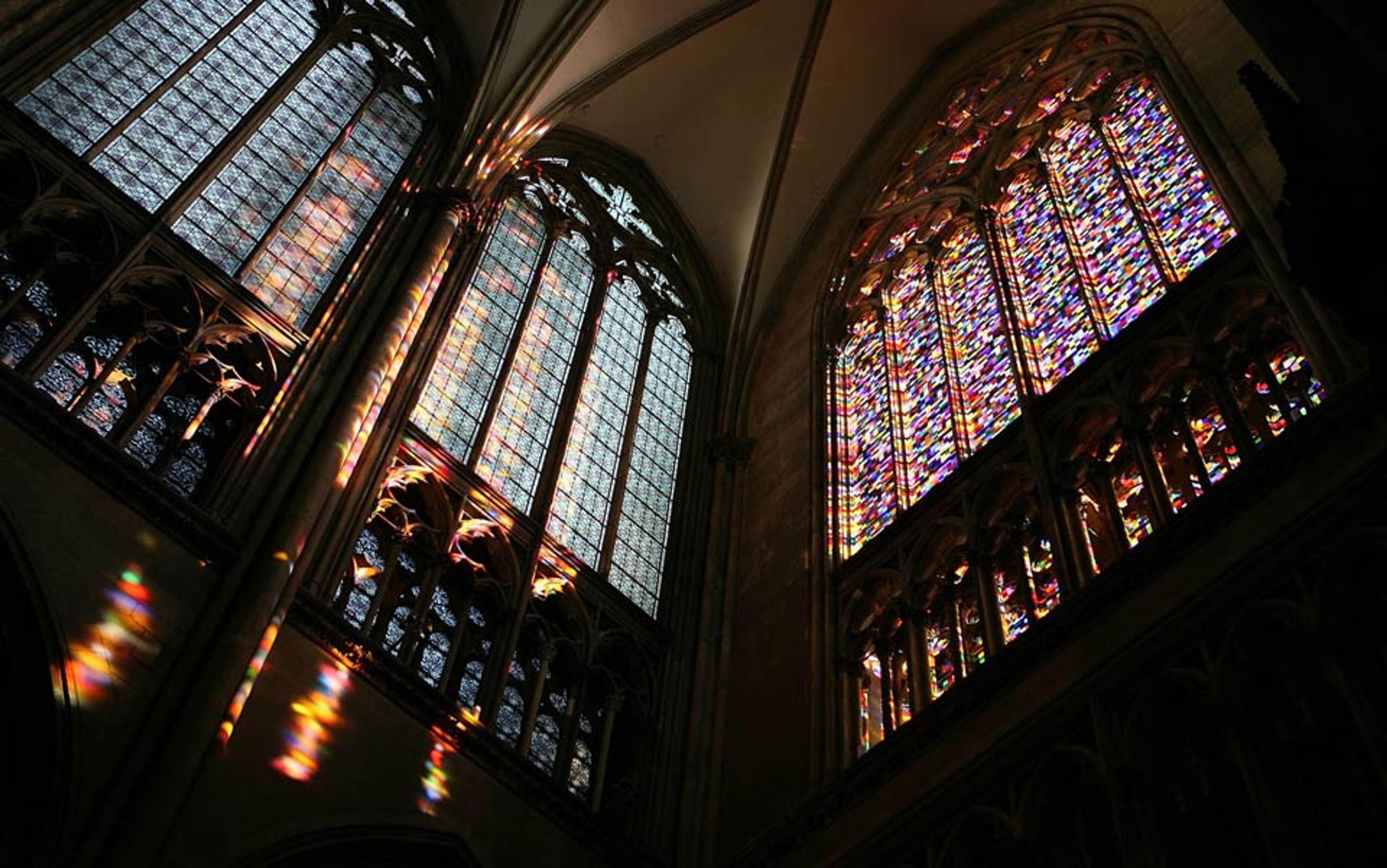
Atheistic pixels: Gerhard Richter’s window in the south transept of Cologne Cathedral. Photo by Ralf Juergens/Getty Images
For Richter, himself a professed atheist, the status of art and the experience of art continues to be both a puzzle and a driving force. Even the gorgeous, stained-glass window he created for Cologne’s Roman Catholic Cathedral is a question rather than an answer. This is the Cathedral of the city where he lives, and where his three children and his third wife, Sabine Moritz, also a painter, were baptized. It is where he sometimes attends worship. And yet the window, far from some all-confirming assertion of Catholic teaching, is made up from 11,500 squares of glass in 72 colors, randomly organised by a computer to resemble pixels. The dazzling shower of multi-coloured light can lead one’s thoughts and emotions in many directions and can be harnessed to almost any orthodoxy – including an embrace of the pure chance of our existence. In fact, so outraged was the Archbishop of Cologne by the window’s stubborn refusal to give specific doctrinal shape to the emotions it stimulated that he found he had a prior commitment elsewhere on the day of its unveiling.
Perhaps there is no more to be said about painting’s seductive offering than Richter’s tentative statement to the American curator and critic, Robert Storr: ‘A painting can help us think something that goes beyond this senseless existence’. In doing this it offers both the painter and the viewer a kind of salvation. And perhaps this, as Rothko said, is the miracle that every artist strives to achieve: ‘Pictures must be miraculous; the instant one is completed, the intimacy between the creation and the creator is ended. He is an outsider. The picture must be for him, as for anyone experiencing it later, a revelation, an unexpected and unprecedented resolution of an eternally familiar need.’
The miracle, in other words, is creative resolution. While our desire to look at a painting might be powered by the same eternal, spiritual need that drives us to the desert or the temple, the revelation we find there is of a different order. True, we continue to seek in art, among many other things, a correspondence with those oceanic feelings, a soothing of our hunger for transcendence, but the salvation it offers is without substance or destination.
